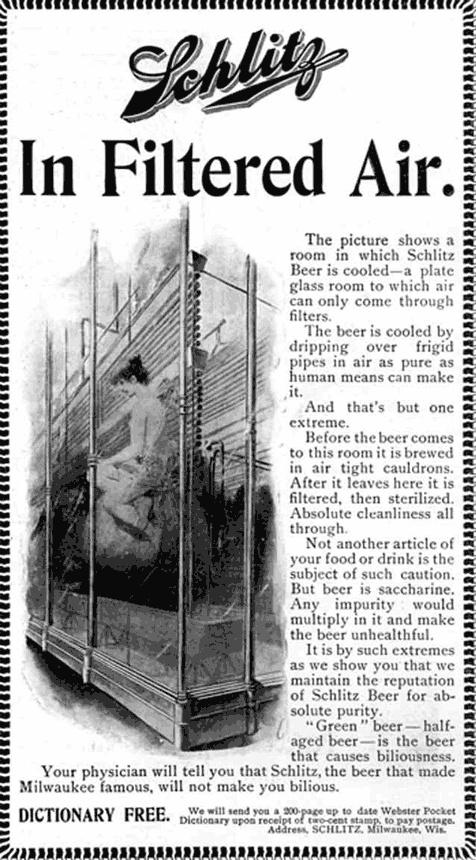Long-Lasting Lessons from Claude Hopkins Most Successful Advertising Campaigns (Part II)
The Schlitz Beer Campaign
I started this series with the Cotosuet advertising campaign. The approach to that campaign was to use samples and dramatic demonstrations to gain thousands of users in different cities.
When the competition cut prices, Claude, instead of lowering the price, offered a service to bakers, his target audience.
Some lessons learned from that campaign:
- Let potential customers try the product before buying it.
- Show your product in use - what it does, how it works.
- Sometimes price is not the real problem. Find a different angle to keep your customers.
The campaign we are going to discuss today was another successful one. Within six months, Claude lifted Schlitz from fifth place to a tie with Budweiser for first.
Let’s see what he did to make it happen.
Advertising Project - Schlitz Beer
Strategy
Explain what it takes to make your product and be the first one doing it.
The Product
Schlitz beer “The beer that made Milwaukee famous.”
Campaign Approach
Schlitz beer campaign was about giving meaning to a claim.
In the early 1900s, the claim used to advertise beer was purity. You could see the word “pure” in almost every beer ad. But no one was backing it up. What was the meaning of purity? Why should consumers care about it? Well, it turns out, they didn’t care at all. For them, the term 'pure' meant nothing.
In Claude's words, “The claim made about as much impression on people as water makes on a duck.”
Being a firm believer in reason-why advertising, Claude needed to find a way to give meaning to that claim and provide specific reasons to buy Schlitz beer.
The first step was research. He learned about the science of brewing in a brewing school. Then, he visited the Schlitz brewery to see how they made their beer, paying close attention to every detail. He found the installations and the whole beer-making process fascinating.
Customers should know about that!
Using everything he had learned during his visit, he wrote ads like this one:

From that moment on, purity had a meaning.
Purity came from:
- Cleanliness that was carried to extremes. They cleaned every pump and pipe twice daily. Every bottle was cleaned four times.
- Rooms filled with filtered air so the beer could be cooled in purity.
- Pure water that was brought from a rock 1,400 feet underground.
- Brown bottles that protected purity from the brewery to the consumer's glass.

Lessons learned from the Schlitz campaign
- Sometimes being too close to your product doesn't let you see how special it could be to others.
- Nothing is too common to be told if it had never been told before. Schlitz owners thought the idea of advertising the process was foolish because every brewer was doing the same. Take an ordinary attribute common to similar products and claim it before anyone else. People will remember you for that.
- Honesty sells. Increase credibility and trustworthiness by explaining step-by-step what you are doing and how. By showing where the purity came from, customers perceived Schlitz beer as purer than others. Even people who usually didn't drink beer wanted to try this brand to experience its purity.
- Storytelling. People love stories. Claude tells in his advertising a story that is relevant to selling the product. At the time, explaining the beer-making process was a novel concept and it caught people's attention.
- Always back up your claims with facts, details, and narrative.
Here is the complete Claude Hopkins successful campaigns series:
- Long-Lasting Lessons from Claude Hopkins Most Successful Advertising Campaigns (Part I) - The Cotosuet Campaign
- Long-Lasting Lessons from Claude Hopkins Most Successful Advertising Campaigns (Part II) - The Schlitz Beer campaign
- Long-Lasting Lessons from Claude Hopkins Most Successful Advertising Campaigns (PART III) - Palmolive Soap and Shaving Cream Campaigns
- Long-Lasting Lessons from Claude Hopkins Most Successful Advertising Campaigns (PART IV) - The Puffed Cereals Campaign
- Long-Lasting Lessons from Claude Hopkins Most Successful Advertising Campaigns (PART V) - The Pepsodent Toothpaste Campaign
